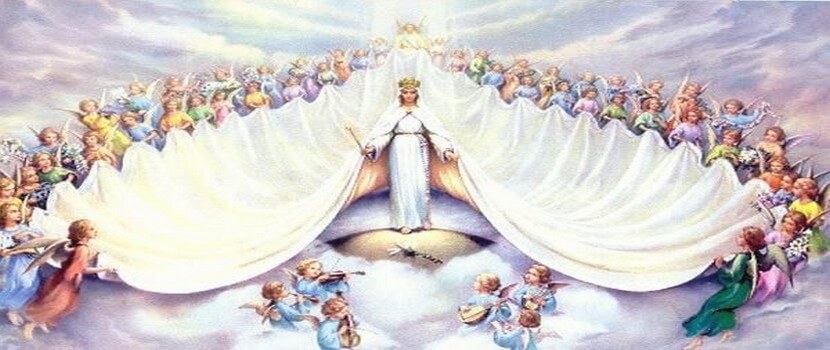

Written by Benoît Santos - Updated on Oct 27, 2024
Catholics and Orthodox are both Christians, so they believe in the same Lord and the Bible . However, there are some differences between these two religions. The schism of 1054 that marked the rupture of the Eastern and Western Churches originally led to the separation of the Catholic and Orthodox Churches . At that time, many differences between the two religions appeared. The differences are evident in several areas: religious rites, the way of behaving and a good number of beliefs.
If Catholic and Orthodox Christians believe in one God and use the same Bible, why are there differences in their worship and hierarchy? What are the essential reasons that caused the two Churches to separate? Why did they develop different traditions ?
To understand everything, we must go back centuries. In order for Christians to get rid of false information about the separation of these two religions, we have decided to reveal the truth about the subject.
In this article, we will develop:
- The significant history of the Catholic and Orthodox religion
- The differences on the dogmatic point of the two religions
- What about the Immaculate Conception?
- The difference between the Catholic cross and the Orthodox cross
- Theological difference that persists between the two confessions
- Various traditions and the Easter celebration
If you want to learn more about the difference between the Catholic and Orthodox religions, here is an article that shares more information:
- The Schism 1054 : Causes of the Separation between East and West
And if you want to know the difference between the Catholic and Protestant religions, here is another article to discover just below:
The history marking the Catholic and Orthodox religion

Long before the rupture, major quarrels had already begun and led to the estrangement of the Church of the East and the Church of the West within Christendom. The factors of this event are numerous, but they are mainly characterized by political reasons such as the Norman invasion of Byzantine possessions and socio-cultural ones such as the papacy's aspiration to manage the political branch. But these disagreements are nevertheless less important than the theological conflicts . A first rupture took place on July 16, 1054 between the Church of Rome and that of Constantinople, when Cardinal Humbert of Moyenmoutier deposited a bull excommunicating Patriarch Michael I Cerularius and his close collaborators on the altar of the Basilica of Saint Sophia. The patriarch retaliated by excommunicating in turn Cardinal Humber, the papal legate who had just died.
During the year 1054, the orthodoxy of the 7 councils was then adopted by 4 of the 5 patriarchates of the undivided Church including Jerusalem, Antioch, Alexandria and Constantinople . The only patriarchate to be left out was Rome and this is what is known as the Great Eastern Schism . In 1204, Constantinople was taken by the Crusaders. Subsequently, the constitution of the Latin patriarchates on the Greek environment broke down. This led to the exile of several Orthodox bishops. It was not until the end of 1965 that Patriarch Athenagoras I of Constantinople lifted the excommunication pronounced against Cardinal Humber of Moyenmoutier. And at the same time, Pope Paul VI lifted the excommunication pronounced against Patriarch Michael I Cerularius.
Hierarchy
Catholics and Orthodox use the same hierarchy with three main categories: deacons, priests, and bishops. The major difference in hierarchy is the status of the Roman Catholic Pope . Early in Christian history, the Roman bishop held a position of honor because of the historical importance of the city of Rome. In contrast, the Orthodox recognize the Pope but reject his supremacy over the Church in general, based on the concept that no one is infallible in religious matters. During the 2nd millennium, the Roman Catholic Church developed a centralized idea of spiritual authority and power. But the Orthodox Church has always retained a large degree of independence. Indeed, the latter is composed of a number of autonomous churches. For example, the Patriarch of Constantinople has no direct authority over the other patriarchs.
The differences on the dogmatic point of the two religions
The dogmatic elements concern the various essential points:
The Holy Spirit and the Position of the Pope
The difference concerning the idea of the Holy Spirit is probably the most important of all. It is an ecclesiological question. The Orthodox believe in the monarchy of the Father as the sole source of divinity. According to them, the Holy Spirit and the Son of God come only from the Father. Catholics, on the other hand, consider that the Holy Spirit is "spirated" by the Father and the Son. It is therefore a "spiration" of two beings as one principle.

Then there is the primacy and infallibility of the Pope. This is also the other essential cause of the schism. It is the will of the popes to transform a moral primacy into a direct legal power over the Churches. From the 11th century, the Gregorian reform attempted to directly submit bishops and kings to the pope and claimed the infallibility of the sovereign pontiff. The Orthodox consider the pope as the patriarch of Rome. They recognize him as a primacy of honor and not as the head of the Church. The place of the head is for them reserved for Jesus Christ . The dogma of papal infallibility defined by the First Vatican Council in 1870 is also rejected by the Orthodox. According to them, the mode of government of the Church is based on the bishop, the assembly of bishops and the ecumenical council. Moreover, they established a decentralized organization and collegial decisions . For Catholics, all authority comes from the Pope .
What about the sacraments and the last things?

Catholics admit the indissolubility of marriage. They defend the adage "What God has joined together, let no man separate!" For the Orthodox, infidelity renders the marriage null and void. They do not divorce strictly speaking, but if the sacrament has been performed, the marriage can be broken for infidelity. Concerning the Eucharist, the Orthodox believe in the real presence and think that it is a consubstantiation, because they do not reason in terms of objects. They also believe that it is not the words of institution that prove the real presence, but the epiclesis performed in community. On the other hand, they affirm that the Roman Mass does not include an epiclesis. In other words, the Orthodox believe that it is the Holy Spirit who makes Christ bodily present during worship. As for ordination, married men can be ordained and if they become widowed, they are no longer allowed to remarry. For baptism and confirmation, the age varies between the Catholic and Orthodox religions.
Regarding the last things (dead), Catholics believe in purgatory . They also believe that after death there is a final personal judgment. On the other hand, the Orthodox do not believe in purgatory. However, they believe that the prayer of the Church can bring people out of hell , as long as the last judgment has not yet arrived.
What about the Immaculate Conception?

The Orthodox consider Mary as the Theotokos, she represents all humanity . They have not determined a dogma that concerns the end of the life of the Virgin and do not take into account the Assumption. Orthodoxy does not recognize the Immaculate Conception. This dogma was born after the schism and for the Orthodox, the Immaculate Conception contravenes the universal characteristic of her vocation.
To be more precise, the term Immaculate Conception refers to the conception of the mother of God and not that of Jesus Christ. It is not a question of virginal conception, because Mary is the fruit of the union of two human spouses. Catholic or Orthodox, these two religions accept the fact that Mary is Immaculate, because she conceives and gives birth to the Son of the Savior and that it is truly a special grace of the Holy Spirit. The difference comes from this grace. For Catholics, Mary benefited from this grace from her birth, hence the concept of the Immaculate Conception. But for the Orthodox, she only obtains this grace at the moment when she says "Yes" to give birth to the Son of God.
Western Churches have terrible theological controversies related to Mary because of the dogma of original sin. While in the East, the Orthodox represent the whole of humanity carrying God . We can add that Catholics accept the virginity of Joseph, as for the Orthodox, they think that he was married to another woman before becoming the husband of Mary. Having become a widower, he remarried without ever having had a carnal relationship with her. Seen from this angle, Mary is a virgin and Joseph is not. However, both Churches consider Joseph as a saint. Moreover, the two religions shared the same saints from the first centuries until 1054.
The difference between the Catholic cross and the Orthodox cross ✝️ ☦️
One difference that is visible to the naked eye when we look at the Catholic Church and the Orthodox Church is the cross representing the crucifix of Christ. In fact, the symbol of the Catholic cross is represented with a bar placed in a vertical position and then a second one in a lateral position , thus forming a T-shaped cross.
The Orthodox cross is different because instead of having two bars, the cross has four. Looking at the Orthodox cross, you will notice one bar in a vertical position and a second one on the side like the Catholic cross. What differentiates them are the two additional bars that the Orthodox added: a bar above the bar where Christ's hands were nailed, thus representing the bar where the name of Jesus was written. It was written: "Jesus of Nazareth, King of the Jews" (John 19:19). And in Latin it becomes: "Iesus Nazarenus Rex Iudaeorum", which is simply " INRI ".
The lower beam of the Orthodox cross is the footrest on which the feet of Jesus Christ were nailed . The inclined bar is a symbol reminding us of the two thieves who were crucified next to Jesus. One of them, on the right of Jesus, ascended to heaven, while the other descended to hell. The lower bar of the Orthodox cross is a comparison of the scales of justice and it shows the way to Hell and Heaven. Another interesting fact is that an Orthodox Church cross can serve as a compass, because the upper point of the inclined beam always shows the way to the north.
Theological difference that persists between the two confessions
For about fifty years, dialogue has been taking its place between Catholics and Orthodox. They are now moving forward thanks to the work of the joint commission for official theological dialogue between the Orthodox Church and the Catholic Church established in 1980. Many joint declarations have been produced, the first of which was that of Munich in July 1982. Between the two confessions, we note today that there are few fundamental divergences . A professor of Theology at the Saint-Serge Orthodox Institute and member of the joint committee for Catholic-Orthodox theological dialogue in France states that "the main dispute between Catholics and Orthodox is ecclesiological ." The Filioque is no longer a reason for division since it is possible to recite two forms of profession of faith during a Catholic mass. Being recognized only by Catholics, the conflict over the dogma of the Immaculate Conception is designated as "a relatively peripheral problem."

For some historians, the ecclesiological difference refers to the two concepts of power established in the Middle Ages: the Roman Catholic Church became increasingly centralized and the Orthodox Church organized itself into patriarchates . From there, two visions of communion can be distinguished: a communion in difference in the East and an apostolic communion in the West, based on the Roman filiation with the apostle Peter. Michel Stavrou, a theologian, admits that between the two Churches, we notice that they seek a balance of conciliarity and primacy. He continues to think that the Catholic Church has functioned vertically for a long time and this functionality was crowned by the proclamation of the dogma of papal infallibility around the 1870s. The Orthodox Church, for its part, has taken the habit of meeting in synod to decide. According to Michel Savrou, these are two fairly complementary Churches .
The different beliefs

The beliefs of the Roman Catholic Church are meticulously gathered in the Catechism and this is not the case for the Orthodox Church. However, both religions respect the decisions made by the first 7 Ecumenical Councils which encompass the heads of the Church on key principles such as:
-
The Trinity : The Creator is one in three persons: the Father, the Son, and the Holy Spirit. The Father designates the Creator in heaven, Jesus Christ symbolizes God on earth, and the Holy Spirit marks the omnipresence of God. Catholics and Orthodox, however, disagree on how the Holy Spirit circulates within the Trinity. For the Orthodox, it is from the Father through the Son, and for Catholics, the Holy Spirit proceeds from the Father and the Son.
-
Jesus Christ is both human and divine for both religions.
-
The specific status of Mary . As we have seen previously, the dogma of the Immaculate Conception among Catholics is not recognized as such among the Orthodox. However, the divine motherhood of the all-pure Virgin Mary is always maintained.
Various traditions and the Easter celebration
The richness of the spiritual practices of the Orthodox Church and the Catholic Church is exceptional. These two religions have the same references in terms of sacrament: Baptism, Confirmation, Eucharist, Reconciliation, Anointing of the Sick, Order, Marriage.
As for the difference between the sign of the cross between the two religions, we have written an article dedicated to a subject that we invite you to discover by clicking on the link in blue.
When Catholics pray, they adopt a standing or kneeling position during Mass. Among the Orthodox, they either remain standing or sit. The Popes who lead the Masses hum, but do not speak.
Catholics eat unleavened wafer or unleavened bread, while Orthodox eat leavened bread. While Catholics have statues and paintings to display the saints, Orthodox maintain their iconographic tradition and do not focus on the image of Jesus Christ bleeding on the cross. Among Orthodox, baptism is done by immersion. Orthodox priests and popes can marry and have children. On the other hand, the Catholic Church imposes celibacy and forbids the marriage of priests and nuns.
Finally, the Catholic Church has been using the Gregorian calendar since 1582. Pope Gregory XIII introduced it in the 15th century. The Orthodox choose to keep the use of the Julian calendar, a solar calendar introduced by Julius Caesar in 45 BC. But this does not prevent the Orthodox Churches from gradually adopting the Gregorian calendar. This is why some holidays coincide except for Easter since they still calculate this day according to the old calendar. Five weeks of difference can occur between the day of the Easter celebration for Catholics and Orthodox. We specify that these two Churches have different interpretations on the meaning of Easter. Catholics believe that the crucifixion of Jesus saved Man and Jesus Christ washed away our sins. Orthodox believe that salvation is obtained by the triumph of Jesus Christ over death in the Resurrection.
In conclusion, in the practice of faith, the differences may seem significant, but Catholics and Orthodox remain quite close. Moreover, many attempts have been made to reunite these two Churches over the centuries and these efforts continue to persist until today. If you would like to share this well-detailed article on the difference between Catholicism and Orthodoxy, do not hesitate to share it with your loved ones .
Many people can't tell the difference between a cross and a crucifix. If you want to know the difference between these two jewels, click here , to read this incredible article that we have written for you.
5 comments
merci, sincèrement maintenant je sais qui je suis, je suis catholique.
Bonjour,
Vous pourrez trouver plus d’informations sur le signe de la croix en copiant cet url juste ici :
https://croix-chretiennes.com/blogs/blog-croix-chretiennes/comment-faire-le-signe-de-croix
Merci
Merci pour ce partage mais j’aimerais bien que vous re-preciser voir la différence entre les catholiques et orthodoxe au niveau du signe de la croix.
Merci
To write a comment







Papoundi jean Bosco
Sep 10, 2023je suis bien content d’avoir compris la différence entre l’Eglise Catholique et l’Eglise Orthodoxe une différence qui n’est pas considérable prions qu’il soit un jour uns